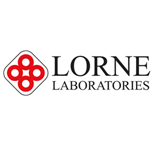Coombs Control Cells Function
3 August 2017
Coombs Control Cells are a red cell product used for a variety of reasons including:
- To ensure that AHG tests with negative results are not false-negatives.
- To ensure that AHG reagent was not omitted or inactivated.
They are also used in tests commonly known as Coombs Tests, AGT or Antiglobulin Tests, which are used within immunohematology and immunology area. When the Coombs Tests were discovered by Immunologists Robin Coombs, they was historically performed in test tubes, nowadays the AHG tests also performed using microarray and gel technology.
There are two types of Coombs Control Tests, Direct Coombs Control Test and Indirect Coombs Control Test.
Direct Coombs Test
The direct Coombs Control Test is used to test for autoimmune hemolytic anemia where there is a low red blood cell count caused by the immune system destroying them. The test works by detecting the IgG antibodies (or complement proteins) that are on the surface of the red blood cells. A blood sample is usually taken and the plasma is removed then incubated with a Coombs Reagent, if this process produces an agglutination of red blood cells, the test is positive.
Indirect Coombs Test
The indirect Coombs Control test is used mostly on pregnant women and on patients who are about to undergo a blood transfusion. The test detects antibodies against red blood cells that are present in the patient’s serum but are unbound. The process works by a blood sample being taken from the patient then the serum is removed from the blood sample. The serum is then incubated with Red Blood Cells of known antigenicity and anti-human globin is added. If agglutination follows, the test is positive.
The Coombs Reagent
The Coombs Reagent (also known as anti-human globulin) is used to distinguish the presence or absence of immunoglobulin on the surface of red blood cells. When used in tests, it helps cross match blood before transfusions to ensure no antigen-antibody reactions will occur as well as to test for the presence of specific antibodies to red blood cells.
Lorne’s Coombs Control Cells
Coombs Control Cells have a shelf life of 35 days and are made up of 3-5% of single donor group O red cells, they are then washed to remove all blood group antibodies then re-suspended in a preservative solution which usually contains neomycin and chloramphenicol as the preservatives. Lorne’s Coombs Control Cells have already been pre-sensitized with IgG and are in full compliance with UK Red Book Standards. Lorne also stocks a range of other Red Cell products as well as diagnostic kits; find a local distributor in your area today to find out more.
< Back to blog list
Share




